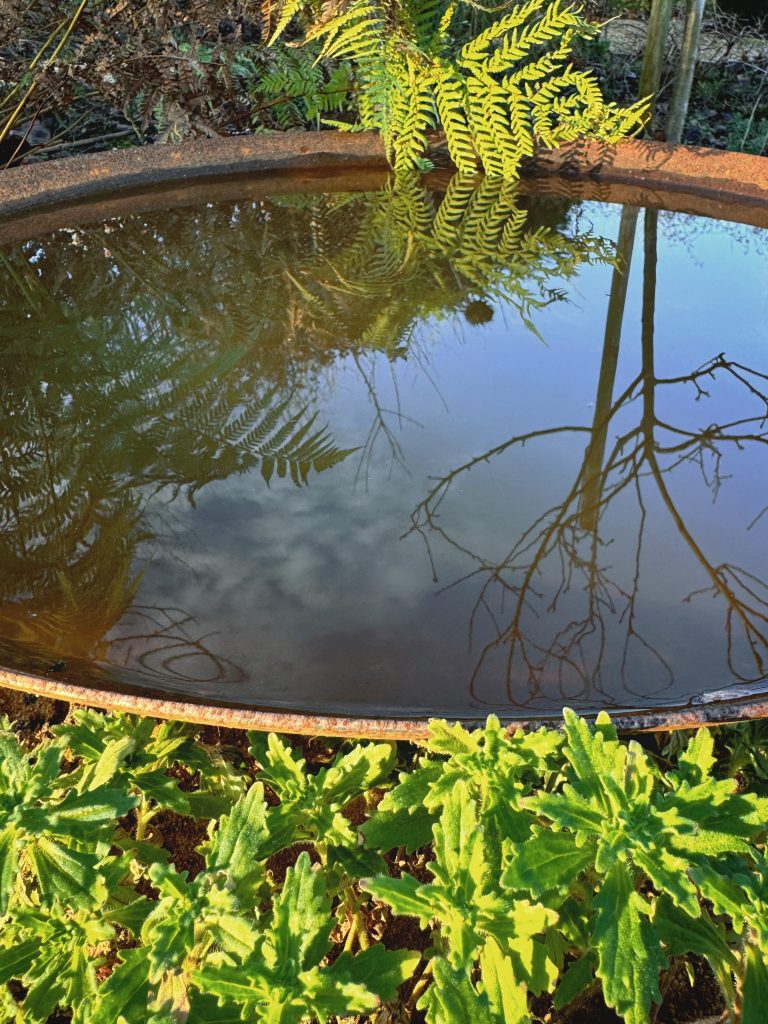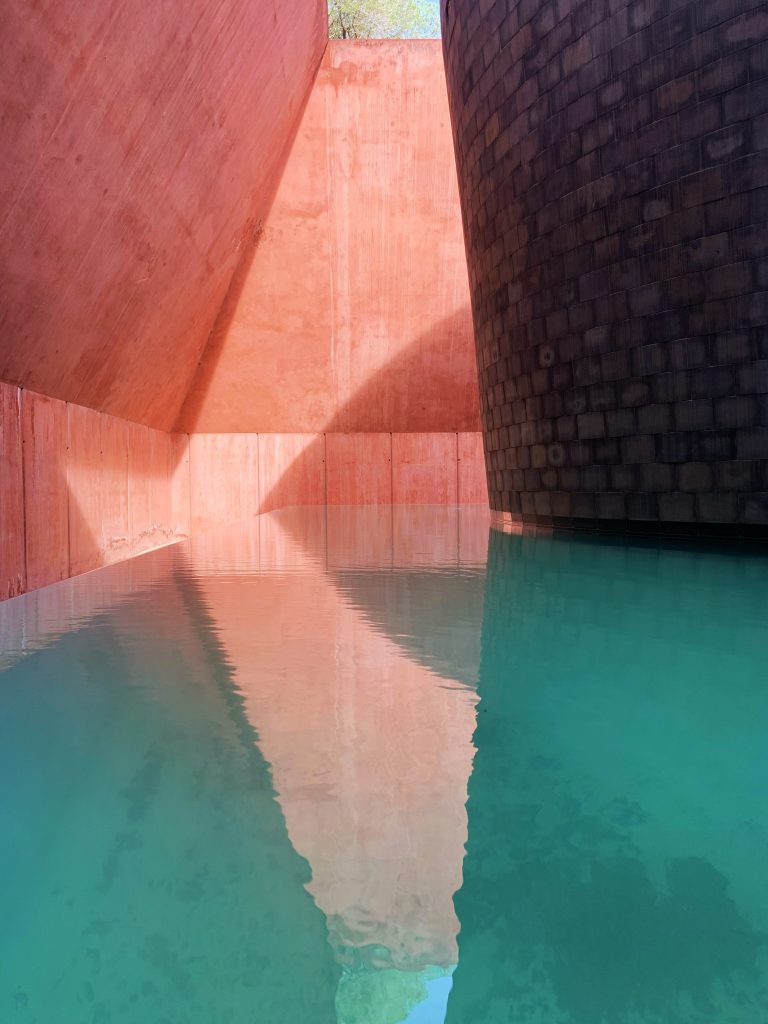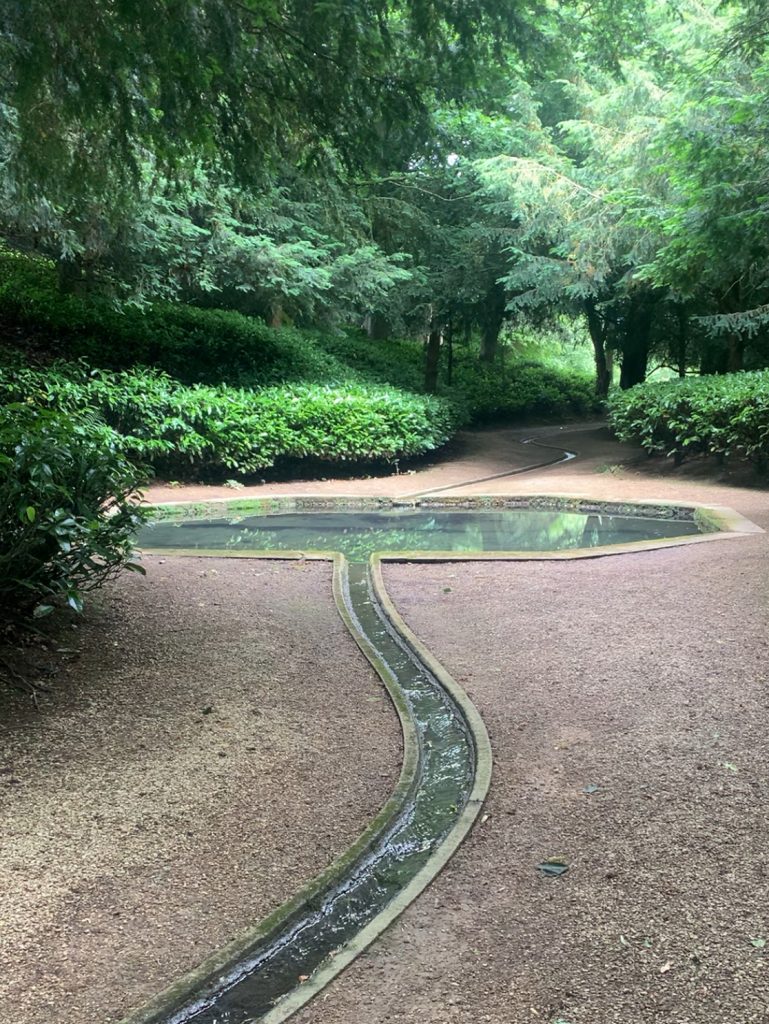water

This spring, I bought myself two small water bowls. One is tiny not more than 80cm across, the other is a little larger at 1.2m across. I placed the small one in my protected veg garden surrouded by four pear cordons, aptly named pear court. The larger one is under a small Dicksonia Antarctica in my foliage/white garden. They are relatively smaller than their respective space, already reflections were captured, birds were attracted, and movements were felt as if the garden has just been given a heart that pulsed.
As a scuba diver, I have always drawn to the water. The sea for me is there to immerse in, however the fresh water for me is there to reflect. There are many reflections, the sky, the cloud, a flower. My favorite is fine foliage, as if a textile art created by Avieen Daly – intricate and real. Plant a fern next to a water feature or a pond, immediately it brings antiquity to the garden as if it has existed for a long time. A water feature is also a magnet to all sorts of wildlife. Put one not far from a bench, so you can sit and enjoy the coming and going for hours.
All gardens need to have water in them, even if it is nothing more than a birdbath. So how to decide what sort of water feature is best suited for you?
What do you want the water to do?
Is it to attract wildlife or cool an area nearer the house? Is it to provide a focal point to keep the eyes in the garden or is it simply somewhere to collect rainwater? Is it ornamental or would you like fish in the pond? Would you like to swim in the pond? What sonic quality do you prefer? Is it trickled running water or is it a waterfall sound?
Think about your soil and the water table. This is particularly relevant if you are digging for a pond or a pool. If you have a seasonal boggy area in the garden, that may well be the best place to install a natural water feature. Nature always gives the best clues!
Think about size and depth.
Measure the area that you think you can position a water feature, then stretch it even larger! Water surfaces always look smaller in reality than on the plan. For a small ornomental pond, a depth of 60cm works well. For a koi pond, a minimum depth of 1m is required to keep the fish safely out of the frozen zone in winter.
Plan space for extra kits.
From balancing tanks to pumps, from water filters to large skimmers, they are increasingly useful if you are after some degree of clarity in the water and you dont want to be a slave to weed or dropping leaves. All of these require space. Be sure to plan for it as you don’t want them to spoil the view of the water feature.
A water feature of any size brings reflection, sound, movement and so much more to an outdoor space. If you are planning to have a water feature, speak to Shan Liu Garden Design, from a pond to rills there are so many options you can choose from.
Shan Liu Design
Garden designer, Plant lover, Thalassophile, Mum of two

